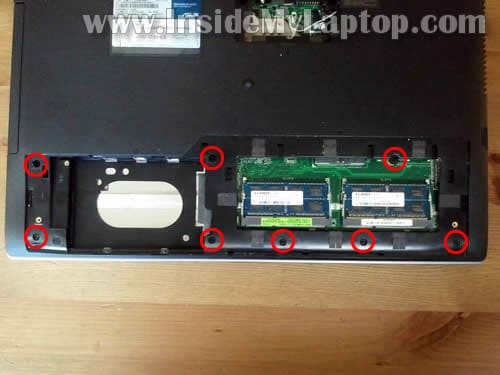
as far as a caddy goes are you sure you don't have one In that 2 hard drive bay, if not I would look on ebay for one otherwise you could just tape it in place.

any 2.5" SSD should work or any 2.5" 9.5mm or less thickness one. All the caddies i see on the market are actually ADAPTERS rather than simple fitting brackets. The current mode is AHCI along with stock Seagate 7200rpm internal harddrive, with stock Intel RST driver. And i'm willing to buy another large HDD (possibly a 1 TB one, 7200 rpm), but i have a few questions about installation.įirst off, Is it OK to use ANY 2.5" HDD brand (eg: non-Seagate like Hitachi, WD, Samsung.) for 2nd drive installation? Is there any limitation inside the BIOS which i don't think so. I have Asus G53JW running with stock Seagate 2.5" 7200 rpm internal drive and i'm lacking of more free space as you can understand. I didn't want to create a new thread for the similar question i have.

I have heard that Intel drives are among the most reliable, though corsair and other big-name manufacturers are also good. If you have problems, make sure that you have the latest SSD firmware and computer BIOS installed. Your computer should have come with a little packet of HDD screws that you can use, and the carrier is already in the computer.
#Asus n53sv ssd upgrade install#
Just get one, open the computer - be careful takes a while - and install it. Hardwarewise, I don't think there is anything special that you need to do. That way, you get the best Windows 7 without all the bloatware.
#Asus n53sv ssd upgrade drivers#
The nVidia drivers for instance are several releases out of date. Oh, and get the drivers from the manufacturer (not ASUS) website. If you want that stuff, download it later and add it.
#Asus n53sv ssd upgrade iso#
You need to do it yourself - download Windows 7 ISO from MS website (it is legal) - and install that without all the ASUS clutter. If so it will start a partition in the middle of a page and will leave part of a data block outside of the partition, which will reduce the disk performance. If not, you need to realign it.Įven though it says windows installer does this on its own, it might not do this, and use it's default 1k pages. If this number is divisible by 4096 (that is, if dividing it by 4096 equals a whole number and not a decimal), your partition is correctly aligned. Look for your SSD on the list and find the "Partition Starting Offset" item. Enter Msinfo32 and go to Components > Storage > Disks. To see if your partitions are aligned correctly, hit the Start menu and type in msinfo32.

This means that sometimes, if your SSD was formatted by something other than Windows' installer, it can be aligned incorrectly and will transfer data much slower than intended. A regular hard drive usually starts its first partition after 63 empty blocks, while SSDs require 64 blocks of data for optimal performance.


 0 kommentar(er)
0 kommentar(er)
